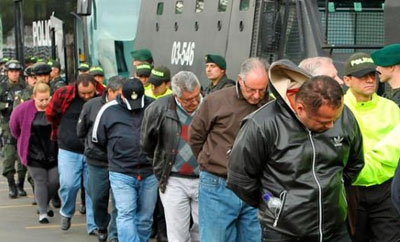Authorities in Colombia and Italy have arrested 13 people who formed part of a drug ring connected to the Italian mafia, evidence that drugs continue to flow towards Europe despite some key arrests in 2013.
Swooping on January 18 as part of “Operation Livorno,” Colombian police arrested nine people, while Italian authorities captured four in the northern Italian city of Trento, reported El Espectador. The group is accused of transporting cocaine to Europe in shipping containers, with more than half a ton recovered during the operation.
SEE ALSO: Colombia News and Profiles
According to EFE, the group was linked to the Italian ‘Ndrangheta mafia and also operated in both Ecuador and Peru.
It is unclear if the Colombians are part of a larger local criminal organization. A detailed breakdown of the group by El Colombiano reveals numerous family ties, with leader “Capi” joined by his wife — who apparently used her position as a flight attendant to pass information between continents — as well as a son and nephew.
InSight Crime Analysis
This latest bust offers yet more evidence of the involvement of Italian organized crime in Colombia. While Italian mafias have begun to work closely with Mexican cartels — with the ‘Ndrangheta linked to the Zetas — ties with Colombian organized crime go back decades. The recent arrests of senior Italian mafia figures in Colombia show the historic links are still very much alive.
The ‘Ndrangheta are said to handle up to 80 percent of cocaine entering Italy and worked closely with Roberto Pannunzi, an Italian cocaine broker arrested in Colombia in July 2013. While international intelligence sources have told InSight Crime Pannunzi was a keystone in the drug supply between Colombia and Italy, this latest operation suggests his and other arrests last year did little to stop the flow of cocaine.
Although the Colombians arrested have not been linked to a larger organization, previous busts connected to the Italian mafia have indicated at least some involvement of the Urabeños, the country’s biggest criminal network.
The use of Ecuador also fits a regional trend, with cocaine recoveries rising exponentially in recent years. In December 2013, Ecuador’s anti-drugs chief Juan Carlos Barragan said 80 percent of the cocaine seized in the country last year was destined for Europe.

